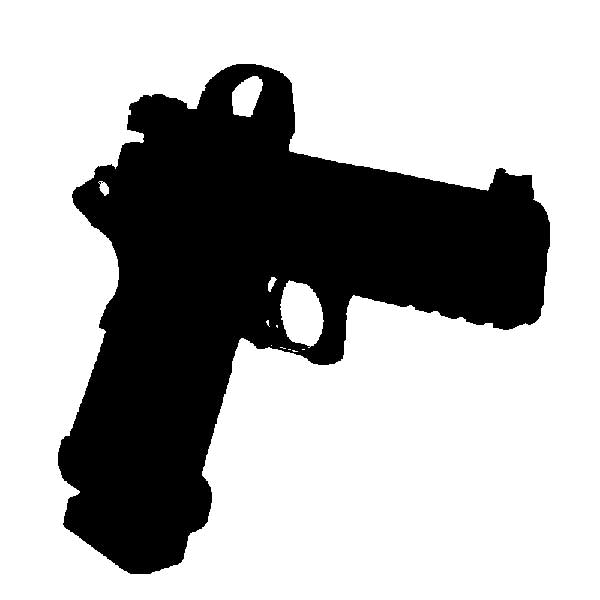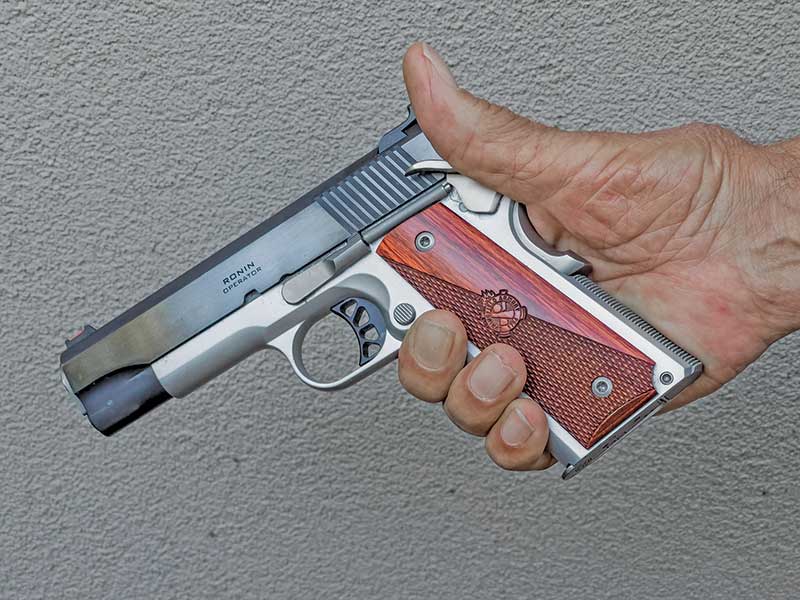I’m writing this while teaching a class in Arcadia, Calif. I was pleased to note the issue sidearm for Arcadia cops is the Colt Government Model .45 auto. Those who pack the company gun have nothing to apologize for.
The first American lawmen to pack the 1911 .45 appear to have been the Texas Rangers. I read that Ranger Paul McAllister reportedly carried one as early as 1912. The Rangers and Colt have always had a special connection; the Texas Rangers first proved the efficacy of Colt’s seminal Paterson revolver, and Ranger Captain Samuel Walker secured the order for the big .44s that later bore his name, kick-starting Colt’s empire.
During the violent 1930s, 1911s got another boost. Federal agent Charles Winstead used a “government .45 automatic” to kill John Dillinger outside the Biograph Theater in Chicago in 1934. Unfortunately, bad guys of the period used them, too. The 1911 was the favored pistol of not only Dillinger himself but Baby Face Nelson, Pretty Boy Floyd and Clyde Barrow.
In the late 1960s, LAPD’s trend-setting SWAT team chose the 1911 as their trademark sidearm. Los Angeles also armed their Special Investigations Section with 1911s early on, but not until the 21st Century were these SA autos authorized for rank-and-file patrol and detectives. A special course was required before authorization to carry on duty.
The 1960s saw a renaissance of the 1911 with some other departments in California. Hollow point bullets were just coming in during that decade, and the big .45 slugs were considered more effective “man stoppers” than the non-expanding .38 Special rounds of the period, with less recoil than a .357 Magnum. A seven-round magazine with an eighth round in the chamber constituted a one-third firepower improvement over the traditional six-shot service revolver, and in a time before speedloaders were common, they were dramatically faster to reload. Eight-round single-stack magazines came later, and higher capacity double stacks later still.
On NYPD’s famed Stakeout Squad in the late ’60s and early ’70s, Jim Cirillo’s partner Bill Allard killed more criminals in face-to-face gunfights than any other member of the unit. His preferred gun was the National Match .45 auto, which he had special permission to carry. Legendary DEA gunfighter Frank White was another famed 1911 .45 man in the late 20th Century. Gun expert Scott Reitz, late of LAPD SWAT, is another very satisfied user of John Browning’s classic pistol.
Life-Saving Features
Many chiefs and firearms instructors disallowed the 1911 because it had to be carried cocked-and-locked, and they feared officers would forget to thumb off the safety in a fast-breaking defensive incident. One reason this is less of a concern today is the AR15 rifle, which has all but completely supplanted the shotgun as the standard patrol car long arm, has a thumb safety that works with the same movement as the 1911, and at least in theory this should make it second nature to a trained officer.
A cardinal 1911 advantage is found in weapon retention. A 1981 study published in Police Chief magazine found the average person could fire a double-action revolver in about 1.2 seconds, but the average person in the test group took 17–18 full seconds to find the safety lever on a 1911: The department in question accordingly adopted 1911s. This “proprietary nature to the user” feature is a proven lifesaver.
Its short, easy, straight-back trigger pull makes the 1911 a perpetually match-winning pistol. That same feature improves hit potential under life-threatening stress. The single-stack cartridge capacity mitigates against “spray and pray” mentality. The result seems to be a high hit ratio in police shooting incidents.
Perspectives
I started carrying a 1911 Colt .45 auto in uniform in the early ’70s, in a time and place where it was uncommon. I heard other cops mutter, “He’s a maverick! He’s a radical!” By 1990, I was lecturing for the Washington State Law Enforcement Instructors Association, and a young police trainer in the front row spotted the Middlebrooks Custom Colt Government .45 on my hip and said in a stage whisper, “Look! An old 1911! Hasn’t this dinosaur ever heard of GLOCKs?”
I wore a Springfield Range Officer .45 on the day I retired from police work in 2017. Today I see young cops with the Staccato 9mm and optical sight — currently seen as cutting edge in police sidearms and standard issue for the U.S. Marshals Service Special Operations Group — and realize the 1911 design has come full circle from state-of-the-art to “geezer gun” and back to cutting edge again. The 1911’s place in modern American law enforcement is not predominant but still secure and here to stay.


